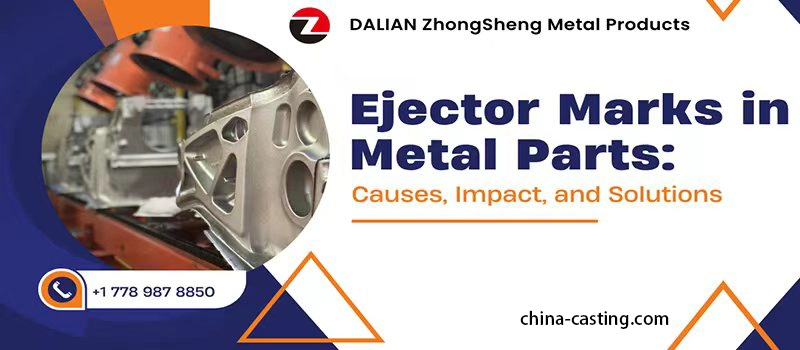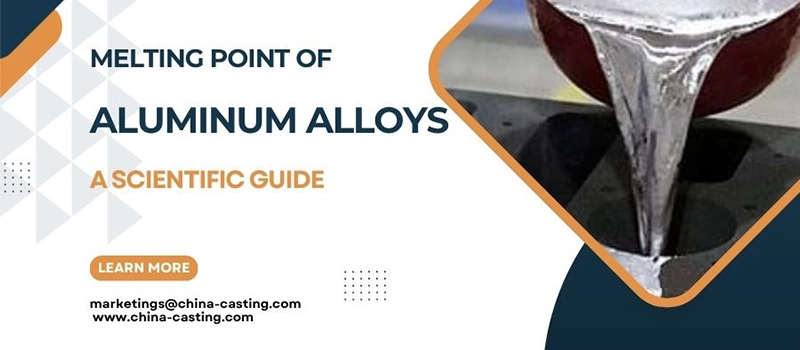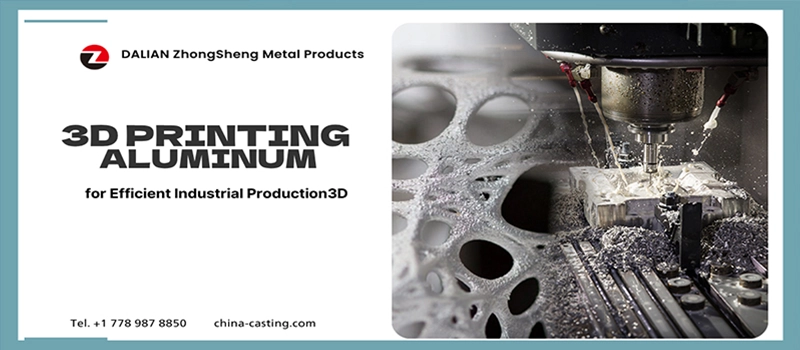Are your metal parts showing surface cracks or failing load-bearing tests even after proper machining? Have you faced delays because the hardness tester results weren’t accurate or consistent? Or worse—has inconsistent hardness caused rework, rejections, or costly returns from clients?
In the metal manufacturing industry, failing to test hardness properly can lead to serious consequences. Without a reliable hardness tester, you risk producing components that don’t meet industry standards or fail in real-world applications. Whether you’re producing cast iron parts, machined steel components, or precision-forged tools, incorrect or missing hardness tester data can lead to batch rejections, production delays, or even damage to your reputation.
That’s why every production line involved in metal casting, machining, or forging needs a suitable, calibrated hardness tester. In this article, I’ll walk you through the types of hardness testers—from Rockwell to Brinell to Vickers—their specific applications, and how to ensure you choose the right one for your process. You’ll also learn how to avoid common testing mistakes and meet global quality standards like CE, ISO, and ASTM.
What Is a Hardness Tester and Why It Matters in Metalworking
In the world of metal manufacturing, quality is everything. And at the core of quality is one invisible yet measurable property—hardness.
A hardness tester is a specialized instrument used to measure how resistant a material is to deformation, penetration, or scratching. In simple terms, it tells us how well a material can withstand surface pressure, wear, and indentation without failing. For industrial applications like casting, machining, and forging, this information is critical. Hardness affects not only the mechanical strength of a component but also its durability, machinability, and performance in the field.

There are multiple ways to measure metal hardness, depending on the process and material involved. Each method uses a specific indenter (usually made of diamond or steel) and applies a controlled load over a set time. The resulting indentation depth or size is measured and converted into a hardness value. This value helps engineers verify if a component meets the required technical specifications or industrial standards before moving into the next stage of production or delivery.
Why Is Hardness Testing So Important in Metalworking?
Let me break it down from a factory owner’s point of view.
In casting, where molten metal is poured into molds and cooled, internal flaws like porosity or inconsistent material density can directly affect surface hardness. Without testing, these flaws may go unnoticed until a component fails in the field.
In machining, we’re dealing with high-precision tolerances. Improper hardness could mean that a part is too soft to hold its shape or too hard, causing tool wear, high scrap rates, and costly downtime.
In forging, where we apply intense pressure to reshape metal, hardness ensures the material has been properly treated and won’t crack under operational stress.
That’s why we always say: “If you’re not testing for hardness, you’re not truly inspecting the part.”
Need Help? We’re Here for You!
Hardness testing provides quick, reliable, and quantifiable data that helps us:
- Detect early defects
- Ensure heat treatment effectiveness
- Maintain batch-to-batch consistency
- Meet CE, ISO, or ASTM specifications
- Prevent warranty claims or part failure in the field
Types of Hardness Testers Used in the Metal Industry
Different types of hardness testers are used depending on the material, surface condition, and testing needs. In casting, machining, and forging, the three most commonly used methods are Rockwell, Brinell, and Vickers. Each has its own advantages and is suited to specific metal products.
Rockwell Hardness Tester
The Rockwell hardness tester is the most commonly used method in general metalworking. It measures the depth of indentation created by a steel or diamond indenter under two levels of load. Rockwell testing is fast and suitable for a high-volume production line, making it ideal for machined components and steel parts with flat surfaces. It’s frequently used in machining environments where testing must be repeated across many parts with speed and consistency. This method works best on medium-to-hard metals such as carbon steel, alloy steel, and stainless steel.
Brinell Hardness Tester
The Brinell hardness tester applies a large load using a steel or tungsten carbide ball. It measures the diameter of the indentation rather than the depth. This method is particularly effective for soft metals and coarse-grained materials, such as those found in cast iron components. Brinell testing is ideal for large parts with uneven surfaces, where average hardness values over a larger area provide a more meaningful result. It’s widely used in foundries, heavy equipment production, and construction part casting.
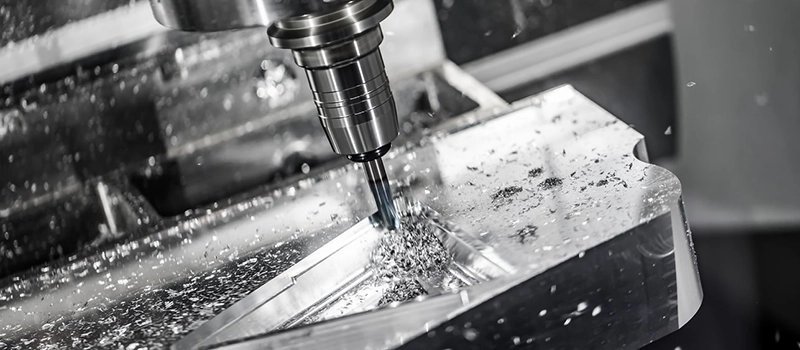
Vickers Hardness Tester
The Vickers method uses a pyramid-shaped diamond indenter and applies it with a lighter load, making it suitable for small or thin parts. It provides high accuracy and is capable of testing microhardness on surface layers or coatings. Vickers testing is often used in the forging industry, especially where precision and uniform hardness are critical, such as in gears, shafts, and aerospace-grade components. It’s also the preferred method in metallurgical labs where detailed hardness profiles are required.
Other Specialized Methods
Beyond the common industrial testers, methods like Mohs and Knoop are used in specialized fields. The Mohs scale compares scratch resistance between materials, often used for mineral testing. The Knoop method is ideal for testing thin layers or coatings and is mainly used in laboratory conditions rather than routine manufacturing.
Each hardness tester type serves a distinct role depending on part geometry, material hardness, and production method. Selecting the right method ensures the accuracy of results, reduces waste, and maintains compliance with international standards like ISO and ASTM.
How Hardness Testing Works in Casting, Machining, and Forging
Hardness testing is not just about applying force and reading a number. It’s a controlled process that requires the right tools, surface preparation, and knowledge of where and how to test. In metal manufacturing, hardness testing is integrated into the production workflow at different stages depending on the process—casting, machining, or forging. Each stage requires its own testing approach due to differences in material structure, surface condition, and expected mechanical properties.
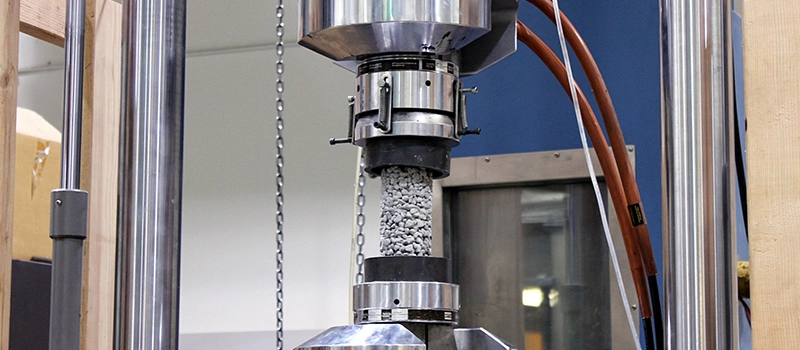
Hardness Testing in Casting
In casting, the hardness tester is typically used after the metal has cooled and solidified. Castings often have a rough surface, varied cooling rates, and internal porosity that can affect hardness values. To ensure accurate results, testing is usually performed on a machined or ground surface where the material is more uniform and consistent.
The Brinell hardness tester is the most common choice in casting environments due to its ability to average hardness over a wider area. This makes it effective at detecting inconsistencies caused by uneven cooling or embedded impurities. For large or heavy cast parts, portable hardness testers are sometimes used to perform in-place inspections without moving the part from the production floor. Proper hardness testing at this stage ensures the final product meets base-level strength requirements before entering secondary processes like machining or assembly.
Hardness Testing in Machining
After a part has been machined, it often requires confirmation that the surface or core hardness has not been compromised. In many cases, heat-treated raw material is used, and the machining process can slightly alter the surface structure. A Rockwell hardness tester is commonly used at this stage due to its speed, simplicity, and suitability for finished or flat surfaces.
It’s important to test in multiple locations on the part, especially if the machining process involved high temperatures or multiple steps. Surface preparation is minimal for Rockwell tests, but cleanliness is critical. Hardness testing in machining helps confirm that the component retains its mechanical integrity and complies with the required technical standards before moving to assembly or delivery.
Need Help? We’re Here for You!
Hardness Testing in Forging
Forging involves shaping metal under intense heat and pressure, which significantly affects its internal grain structure and surface condition. After forging, a part may undergo heat treatment or surface finishing, and hardness testing is essential to verify uniformity throughout the part.
The Vickers hardness tester is often used at this stage, especially for precision components. It allows technicians to measure hardness at specific locations or depths, providing a detailed profile of both surface and core properties. Forged parts such as gears, axles, and shafts must meet strict hardness requirements to perform reliably in high-load or high-wear environments. Proper hardness testing helps identify stress concentrations or structural weaknesses before the part enters service.
Across all three processes, accurate hardness testing depends on consistent methodology, properly calibrated equipment, and knowledgeable technicians. Missteps at this stage can lead to incorrect readings and potentially allow defective parts to move through the supply chain. That’s why integrating hardness testing as a routine part of quality control is critical to any metal production environment.
Hardness Tester Comparison: Rockwell, Brinell, and Vickers
Choosing the right hardness tester often depends on your production stage, material type, and accuracy requirements. While all three main methods—Rockwell, Brinell, and Vickers—are widely used in the metal industry, each has its own advantages and ideal application conditions. Understanding the differences helps ensure your testing process matches your product needs.
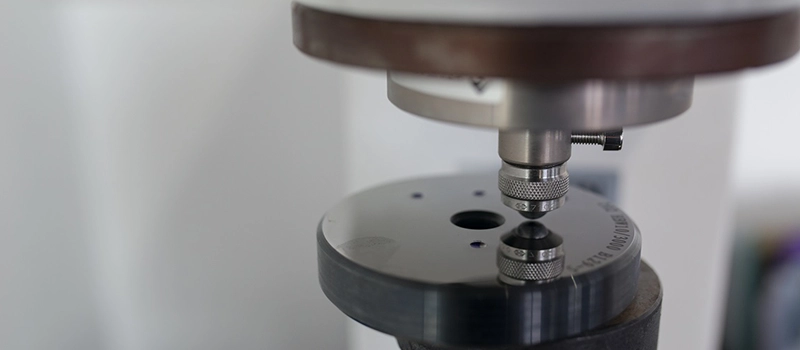
Rockwell Hardness Tester
- Measurement Principle: Depth of indentation under major and minor loads
- Typical Materials: Steel, stainless steel, aluminum alloys
- Best Used For: Machined parts, high-volume testing, flat surfaces
- Speed: Very fast; results can be read instantly
- Accuracy: High for regular-shaped, flat parts
- Surface Requirements: Smooth or slightly rough; minimal preparation
- Ease of Use: Very easy; ideal for shop floor application
- Limitations: Not suitable for thin parts or complex shapes
Brinell Hardness Tester
- Measurement Principle: Diameter of indentation under a heavy load using a steel or carbide ball
- Typical Materials: Cast iron, non-ferrous metals, coarse-grained alloys
- Best Used For: Large castings, rough or uneven surfaces
- Speed: Moderate; requires microscope or optical reader
- Accuracy: Moderate; averages hardness over a larger area
- Surface Requirements: May require surface grinding or prep
- Ease of Use: Slightly more complex due to optical measurement
- Limitations: Less ideal for small or finished parts
Vickers Hardness Tester
- Measurement Principle: Diagonal length of indentation using a diamond pyramid indenter
- Typical Materials: Thin materials, hardened steels, micro-components
- Best Used For: Forged parts, detailed hardness profiling, lab analysis
- Speed: Slower; requires precision setup and measurement
- Accuracy: Very high; excellent for small or complex parts
- Surface Requirements: Polished, flat surfaces for clear indent visibility
- Ease of Use: Requires training; lab technicians or skilled operators
- Limitations: Less suitable for high-volume production lines
Each method has a place in metal manufacturing. Rockwell is your go-to for quick, reliable shop floor testing. Brinell shines in casting environments where parts are large and not fully machined. Vickers provides unmatched accuracy when you need detailed analysis or are working with small, thin, or high-value parts.
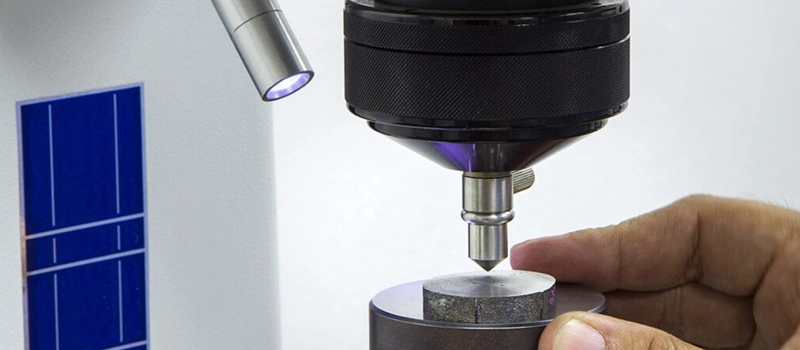
Choosing the right tester not only ensures accurate results but also improves quality assurance efficiency, reduces inspection time, and keeps your production line compliant with international standards. Selecting the wrong method can lead to misinterpretation, unnecessary scrap, or even product failure in service.
How to Avoid These Errors in Production Lines
Avoiding errors in hardness testing starts with a clear understanding of the process and a commitment to consistency. Many issues can be prevented by standardizing testing procedures, training operators properly, and ensuring that all equipment is regularly calibrated. Creating clean, vibration-free testing environments and confirming surface conditions before each test are simple but effective ways to improve reliability.
Manufacturers should also ensure they use the correct test method and scale for each material and part type. Even basic checks—like verifying the indenter and load settings before use—can prevent inaccurate readings that lead to batch rejection or rework. By integrating these best practices into daily routines, production teams can significantly reduce the risk of quality issues and ensure accurate, repeatable hardness test results every time.
Conclusion
In metal manufacturing, hardness testing is not just a technical requirement—it’s a foundation of product reliability. Whether you’re casting complex shapes, machining tight-tolerance parts, or forging high-stress components, using the right hardness tester ensures your parts meet strength, safety, and durability standards. Rockwell, Brinell, and Vickers methods each serve unique roles in production, and choosing the correct one—then applying it properly—can make the difference between consistent quality and costly mistakes. By understanding the testing process, avoiding common errors, and aligning with global standards, manufacturers can safeguard their output, protect their reputation, and deliver parts that perform as promised.


